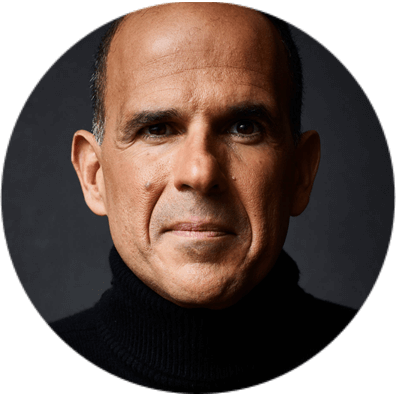Elevator pitches are crucial in everyday life. Regardless of the situation, what we have come to define as an elevator pitch is the first impression you make on an individual. And everyone knows you never get a second chance to make a first impression; that is why it is so important. But what is an elevator pitch? An elevator pitch is how you introduce yourself to someone, let them know what you do or what your business is about, connect, and, when successful, get a follow-up meeting to discuss this association further. Although it has the word “elevator” in it, there really doesn’t have to be an elevator involved at all. The name comes from the fact that in elevators, you only have but a few brief seconds to have a conversation before the other person reaches their destination. So, time is of the essence to get your point across; verbal efficiency and body language are essential.
5 Reasons Why You Should Always Have an Elevator Pitch Ready
- First impressions matter. You never know when you’re going to get the chance to make a first impression on behalf of your business. From the moment you leave your house in the morning, you never know who you are going to bump into as your day unfolds.
- It shows you are a forward-thinker. Being able to present your idea in the smallest time frame possible shows that you are always thinking ahead and prepared for any eventuality.

- You are prepared for any opportunity. By having an already made elevator pitch, you’ll have a script ready to go whenever the opportunity arises. You never want to come across a dream opportunity and miss out just because you were not prepared.
- It shows you can adapt quickly. If you have an elevator pitch ready, you already have more than half of the work done. With the foundation in place, you can focus your energy on tailoring the message to your audience. The more comfortable you are with your elevator pitch, the easier it will be to improvise the tone and language needed to connect with your audience and what sort of arguments and ideas will impress them most.
- You’ll always be ready to network. A prepared script for developing new relationships is critical for significant business events where you might have to make a few first impressions. Not only does it help you maintain consistency, but it allows you to have a streamlined story that you can repeatedly tell without having to create something new in your mind every time you meet someone for the first time.
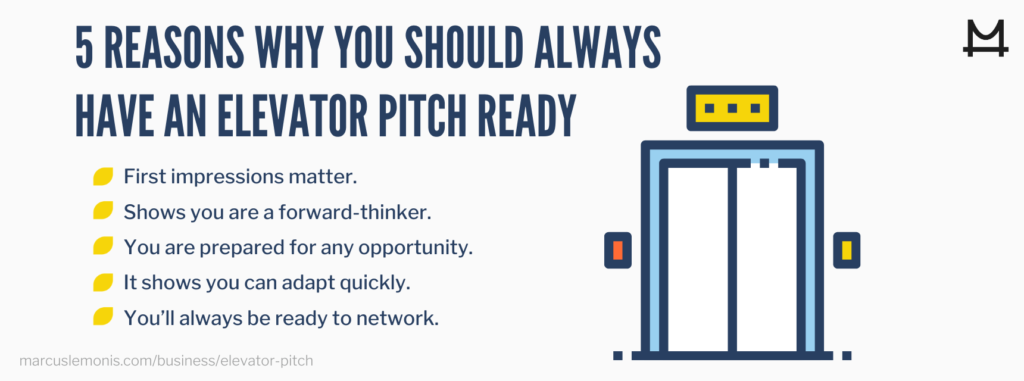

An elevator pitch example could be when you are introduced to a potential business partner in a social setting, like a birthday party. You want to impress the other person enough that he or she would want to follow up with a meeting to discuss business properly; but you don’t want to monopolize their time at a party talking about work. Another example could be bumping into a well-known business person you have been trying to get an audience with, but whose schedule is too busy to make time for you. You happen to see that individual in a public setting like a park or a store where you could approach them to introduce yourself. Without taking up too much of their time, after all, you do not want to become a nuisance, you have to engage them with your story so that they will want to know more and make time for you in their calendar to discuss your proposal further. It is also essential to note that not all elevator pitches are a way to make your first impression. Sometimes elevator pitches are a way for an idea to make a first impression. For example, let’s imagine you work for a large corporation and you have a fantastic idea you have been trying to pitch to your CEO. But since he is a very busy person, you have not been able to get on his calendar. So, what if you try to intercept him between meetings to pitch your idea quickly? He might know who you are already, so it’s not a matter of introducing yourself, but introducing a concept. Your CEO might be interested in this great idea you just pitched and make it a point to clear out some time for you to discuss further.
So how do you do this in 30 seconds or less? Let’s dissect the anatomy of a successful elevator pitch. There are six parts you should try to cover – obviously some of these will vary depending on your situation:

1.Who are you? Introduce yourself. Name, company, and title are more than enough here. Adapt according to your audience. This is where you should present your company’s high concept or a memorable description of your company. A good elevator pitch example of an introduction for a small company is that of The Tie Society: “Netflix for ties & pocket squares” (Roberts, 2015.) It provides a picture that anybody can relate to and understand. With six words, you have painted a picture of what your business is and what you do.
2. Provide a brief background. Why should this person listen to you? What are you offering? What makes you unique enough for this person to dedicate time to you on their downtime? This could be as simple as stating your academic background or a very brief success story. For example: “Hello, my name is Marcus Lemonis, and I have helped over two dozen small businesses grow into successful enterprises.”
3.Provide context. Your background may need a little bit of backstory to provide your audience with some context. If you bring up your academic experience, for example, you might want to say something from what you learned that makes you uniquely qualified. Let’s say you’re talking about business development, and you bring up that you were a political science major in school. How does that tie into the conversation? “As a political science major from Marquette University in Milwaukee, I have extensive knowledge in political economy and international negotiation tactics, which have allowed me to be prosperous when it comes to developing free enterprise models.”
4. Make a connection. This is the most important part of the pitch. Give your audience a taste of what you can do for them, show interest in what they do, and demonstrate that you have done your research. For example: “I have read so much about your work with XYZ, and I am really interested in working with you. I could help you by optimizing your process and developing efficiencies that will help your business increase revenue.” By showing interest in what the other person does and letting them know what you can do for them, you are sure to connect and hook them in.

- Make your ask. This is the hardest part for most people. Some are too embarrassed to ask for something from a person they just met; but if you are not clear about what you are seeking from this connection, there is no way the other person can help you. Are you looking to make an appointment to discuss further? Get their business card to email them later? Are you trying to get a job? Do you want them to use your company’s services? Whatever it may be, you need to be precise and swift; every second counts in an elevator pitch. For example: “Would it be possible to get your business card so that I may email you with my company’s information? I really would love to set up a meeting to show you what my company can do for you” or “I would like an opportunity to work for you. Could you please put me in contact with the hiring manager in charge of recruiting for your company?”
- Close. This is your brief goodbye. Regardless of the response to your ask, always be professional and courteous. A show of gratitude for the time invested listening and a positive attitude could still turn this around if it did not go as you had expected. Try to get their contact information so that you may reach out later. Like with any interview, you should try to contact them within 24 hours to follow up while the meeting is still fresh in their memory. If you cannot get contact information from them, make sure that you can at least give them your business card and try to get their assistant’s name. This will make it much easier to try to schedule an appointment if you know whom to ask for and contact directly.

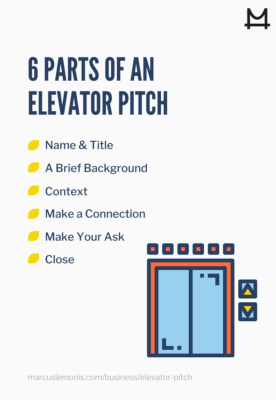
Tips to Give a Great Elevator Pitch
- Be authentic. Be yourself. Tell your story. “Don’t compromise who you are,” are words you’ll hear Marcus say repeatedly. This is very important when it comes to elevator pitches. You don’t want to come across as phony or fake; and usually, people can pick up on those things.

- Be sure to share your background and how you got into the business. Marcus always says: “If you don’t have emotion and you don’t have passion, then you shouldn’t be in business, because money is a byproduct, not the purpose.” Include your goals and demonstrate through your tone and body language that you have skin in the game.
- Connect with your audience. According to Marcus, “the key to business isn’t being smarter or wealthier; it’s being able to connect to people and relate to them.” So, having the soft skill to engage your audience’s attention and make them want to listen to you is not only an important skill when it comes to elevator pitches but also in your overall business strategy.
- Make it crisp. Have a clear message and avoid unnecessary wordiness. Practice your pitch with friends or in a mirror. The more you practice it, the better it will flow when you have to use it. Practice will also help with your confidence, which in return can alleviate your nerves and help you avoid verbal crutches such as ‘um’ and ‘ah.’

- Do not over-prepare what you are going to say. It might sound contradictory to what was just discussed in the bullet above, but practicing your pitch does not mean that you should memorize it to repeat verbatim. Remember to adapt and customize your pitch to your audience. “Audiences are moved to action by speakers they trust” (Duereh, 2010.) You are not going to be able to connect on a personal level if you emotionlessly recite a memorized script.
- Take on the personality of your product. There should be synergy between who you are, how you speak of your business, and what the company is. An elevator pitch example for someone who manufactures kids’ toys should be fun and jovial. While maybe a business analyst who owns a consulting firm might be a bit more reserved and data-driven. Regardless of your product’s personality, always remember to be friendly, approachable, and professional.
- Talk about the price. This is a crucial piece of information if your elevator pitch is to sell a product or if you’re looking for someone to invest in your business. Know your numbers and use them to give your pitch context.

- Do not overwhelm your audience with too much information. Remember that while you are prepared, you are possibly catching someone by surprise. Asking someone who might not even know you, to listen to you on their downtime, is already pushing it. So, keep it simple. Don’t attack your audience with too much information, pace yourself, and make sure your pitch is a string of bite-sized information that can be easily digested.
- Make them walk away with something memorable. The most important part of the elevator pitch is to stand out from the crowd and leave a mark. A well-delivered elevator pitch should be like planting a seed that you can water by following up after the fact. Hopefully, by the next time you meet, you’ll be able to reap the rewards.
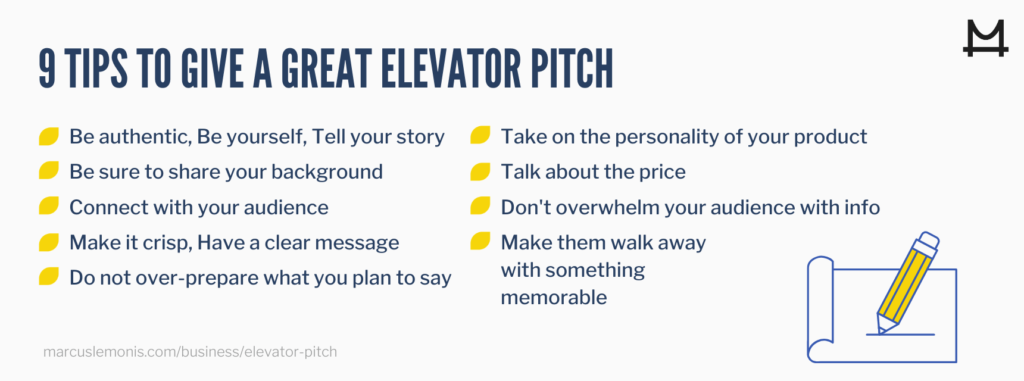
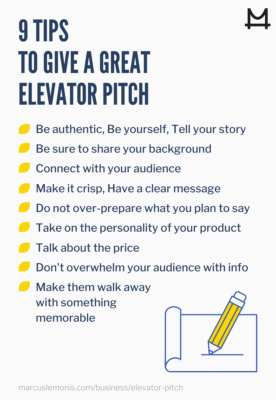
- Do you have an elevator pitch prepared?
- If you have a sales team for your business, are they trained and prepared with an elevator pitch?
